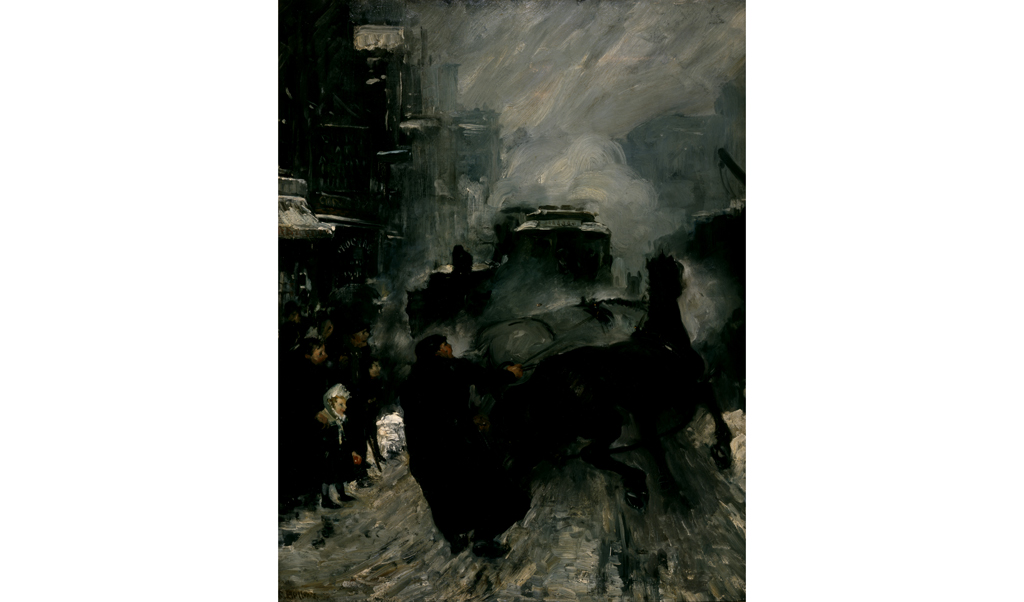Global Artworld 1850-1950: An Art Historical Review

Table of Contents
The Rise of Realism and its Impact (1850-1870)
The mid-19th century saw a powerful reaction against Romanticism's idealized and often fantastical depictions. Realism, with its focus on accurate representation of everyday life and social issues, emerged as a dominant force in the art world. This 19th Century Realism aimed to portray the world as it truly was, warts and all, challenging the established artistic norms and sparking significant social commentary.
- Reaction against Romanticism's idealized depictions: Realist artists rejected the emotional and subjective approach of Romanticism, opting for a more objective and observational style.
- Focus on accurate representation of everyday life and social issues: Realist paintings often depicted scenes of working-class life, poverty, and social injustice, aiming to expose the harsh realities of the time.
- Key artists: Gustave Courbet, with his monumental work "The Stone Breakers," became a leading figure of Realism, showcasing the grueling labor of common workers. Jean-François Millet's paintings, such as "The Gleaners," similarly depicted the lives of peasants, highlighting their toil and resilience.
- Influence on subsequent movements: Realism's emphasis on observation and depiction of the real world profoundly influenced subsequent movements like Impressionism and Social Realism, paving the way for a more socially conscious and observationally driven art.
Realism's Global Echoes:
The impact of Realism extended far beyond France. Similar realistic styles emerged in other parts of the world, reflecting unique socio-political contexts. For instance, the development of Realist painting in Mexico captured the struggles of the indigenous population and the realities of post-colonial life. Similarly, American Realist painters, such as Winslow Homer, documented aspects of American life and the landscapes of the nation. These global echoes of Realism demonstrate the movement's widespread influence and its adaptability to diverse cultural contexts within the global artworld 1850-1950.
The Revolution of Impressionism and Post-Impressionism (1870-1900)
The late 19th century witnessed a radical shift with the emergence of Impressionism and Post-Impressionism. These movements fundamentally altered the landscape of art, rejecting academic conventions and embracing new ways of seeing and representing the world. Impressionist painting and Post-Impressionist painting became cornerstones of modern art.
- Rejection of academic art and embrace of capturing fleeting moments: Impressionists sought to capture the ephemeral effects of light and atmosphere, prioritizing immediate sensory experience over precise detail.
- Focus on light, color, and subjective experience: Color became a key expressive tool, used to convey emotions and sensations. The subjective experience of the artist became central to the creative process.
- Key Impressionist artists: Claude Monet's "Impression, Sunrise" gave the movement its name, showcasing the artist's focus on capturing the fleeting impression of light on water. Edgar Degas and Pierre-Auguste Renoir also significantly contributed to the development of Impressionism.
- Post-Impressionists built upon Impressionism, exploring personal expression and new techniques: Post-Impressionists retained the emphasis on color and light, but pushed further into personal expression and experimentation with form and technique.
- Key Post-Impressionist artists: Vincent van Gogh's intensely emotional and expressive style, exemplified by "Starry Night," stands as a testament to Post-Impressionism's focus on subjective experience. Paul Cézanne's work laid the groundwork for Cubism through his exploration of form and perspective.
Global Spread of Impressionistic Styles:
The impact of Impressionism transcended national borders. Artists around the globe adopted and adapted Impressionistic techniques, resulting in a rich tapestry of styles reflecting diverse cultural and artistic traditions. The influence of impressionistic techniques can be seen in Japanese woodblock prints and within the broader global artworld 1850-1950. This demonstrates the movement's universality and enduring legacy.
The Dawn of Modern Art: Exploring Diverse Movements (1900-1950)
The 20th century witnessed an explosion of artistic innovation, with numerous movements challenging established norms and exploring new forms of expression. Early 20th Century Art dramatically transformed the art world.
- Fauvism: Henri Matisse led this movement characterized by bold, non-naturalistic colors and expressive brushstrokes.
- Expressionism: Artists like Edvard Munch ("The Scream") and Ernst Ludwig Kirchner explored inner emotions and psychological states through distorted forms and vibrant colors.
- Cubism: Pablo Picasso and Georges Braque revolutionized art with their fragmentation of forms and perspectives, challenging traditional notions of representation.
- Surrealism: Salvador Dalí and René Magritte explored the unconscious mind, dreams, and the irrational through dreamlike and often bizarre imagery.
- Abstract Art: Wassily Kandinsky and Piet Mondrian pioneered abstract art, creating compositions based on non-representational forms and colors.
- Dada: This anti-art movement challenged traditional artistic values and societal norms through provocative and often nonsensical works. Its impact on subsequent art movements, like Surrealism, was significant.
Modern Art's International Reach:
Modern art movements didn't remain confined to Europe. These styles were disseminated and adapted globally, often leading to hybrid forms that blended Western artistic concepts with local traditions. The global artworld 1850-1950 saw a significant cross-pollination of artistic ideas, resulting in a diverse and complex artistic landscape.
Conclusion:
The period between 1850 and 1950 witnessed a dramatic transformation of the global art world. From the realistic portrayal of social realities to the revolutionary experiments of modern art movements, artists challenged conventions and pushed creative boundaries. This period laid the groundwork for the diverse and complex artistic landscape we see today.
Call to Action: Delve deeper into this fascinating era of art history! Further research into specific movements within the global artworld 1850-1950 will reveal even more about the artists and innovations that shaped the modern world. Explore additional resources to further your understanding of specific artists and art movements from this crucial period in art history.

Featured Posts
-
 Fete De La Marche A Parcay Sur Vienne Un Succes Avec 100 Participants
May 19, 2025
Fete De La Marche A Parcay Sur Vienne Un Succes Avec 100 Participants
May 19, 2025 -
 Atlantic Island Migrant Drop Off Plan Sparks Outrage In France
May 19, 2025
Atlantic Island Migrant Drop Off Plan Sparks Outrage In France
May 19, 2025 -
 Nos Alive 2025 Headliners Lineup Tickets And Everything You Need To Know
May 19, 2025
Nos Alive 2025 Headliners Lineup Tickets And Everything You Need To Know
May 19, 2025 -
 Fallece Juan Aguilera Primer Espanol En Ganar Un Masters 1000
May 19, 2025
Fallece Juan Aguilera Primer Espanol En Ganar Un Masters 1000
May 19, 2025 -
 February 27th Nyt Connections Puzzle 627 Hints And Solutions
May 19, 2025
February 27th Nyt Connections Puzzle 627 Hints And Solutions
May 19, 2025
